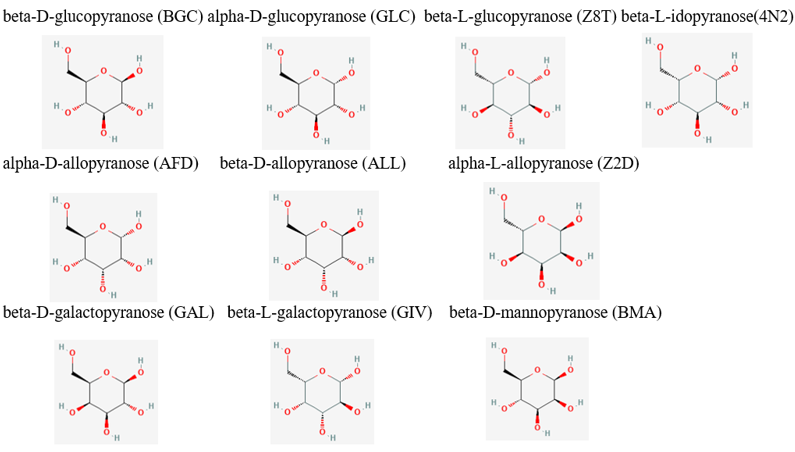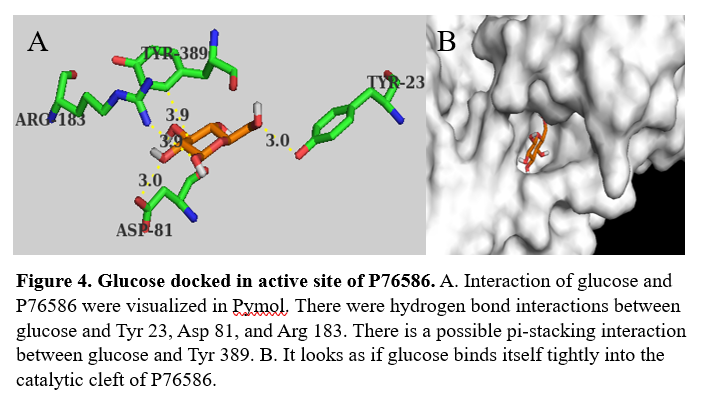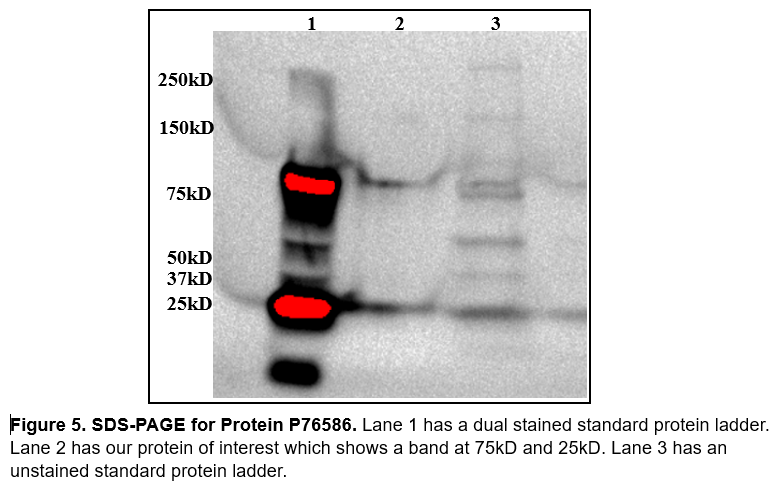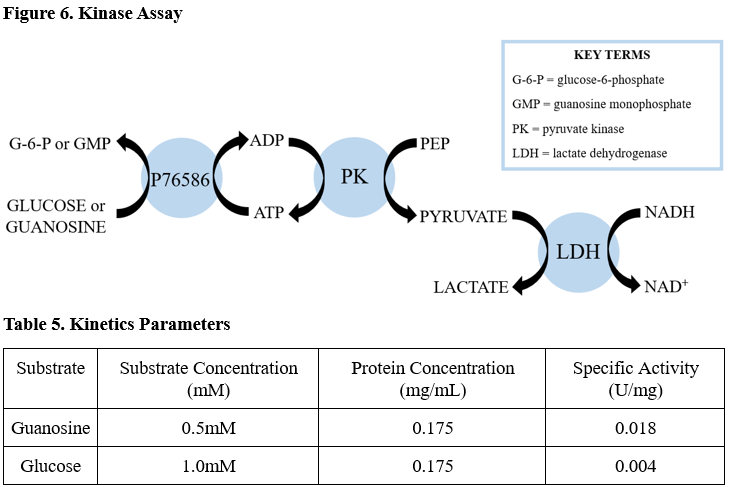BASIL2023GVP76586
From Proteopedia
(Difference between revisions)
| Line 27: | Line 27: | ||
[[Image:Docked_glucose.png]] | [[Image:Docked_glucose.png]] | ||
==Structural Highlights== | ==Structural Highlights== | ||
| - | <scene name='95/957646/Globular_structure/1'>P76586 is a globular protein</scene> with 397 amino acids. It's secondary structure is made up of alpha helices, beta sheets | + | <scene name='95/957646/Globular_structure/1'>P76586 is a globular protein</scene> with 397 amino acids. It's <scene name='95/957646/Secondary_structure/1'>secondary structure</scene> is made up of mostly alpha helices, but also has beta sheets and random coil. Through docking we were able to identify possible amino acids involved in the <scene name='95/957646/Active_site/1'>active site</scene> of P76586. Potential amino acids in the active site are Tyr23, Asp81, Arg183, Gln393, and Tyr389. |
== Results == | == Results == | ||
Our protein of interest has a weight of ≈44.53kD. When analyzing SDS PAGE (figure 5) we were slightly concerned we weren't working with our protein of interest. We didn't get a great image out of SDS, if there were more time we would run again with more protein in the well so that we could see it better. We also made the mistake of not including our induction samples and our fractions from protein purification using nickle affinity chromatography. | Our protein of interest has a weight of ≈44.53kD. When analyzing SDS PAGE (figure 5) we were slightly concerned we weren't working with our protein of interest. We didn't get a great image out of SDS, if there were more time we would run again with more protein in the well so that we could see it better. We also made the mistake of not including our induction samples and our fractions from protein purification using nickle affinity chromatography. | ||
Revision as of 04:32, 26 April 2023
Investigating the Function of Protein P76586
| |||||||||||
References
- ↑ Hanson, R. M., Prilusky, J., Renjian, Z., Nakane, T. and Sussman, J. L. (2013), JSmol and the Next-Generation Web-Based Representation of 3D Molecular Structure as Applied to Proteopedia. Isr. J. Chem., 53:207-216. doi:http://dx.doi.org/10.1002/ijch.201300024
- ↑ Herraez A. Biomolecules in the computer: Jmol to the rescue. Biochem Mol Biol Educ. 2006 Jul;34(4):255-61. doi: 10.1002/bmb.2006.494034042644. PMID:21638687 doi:10.1002/bmb.2006.494034042644







